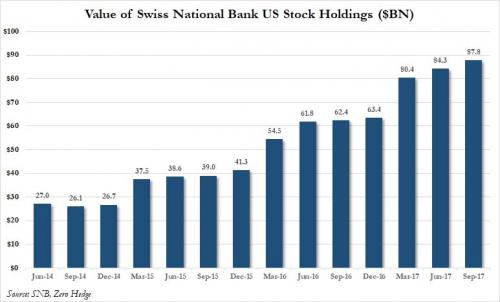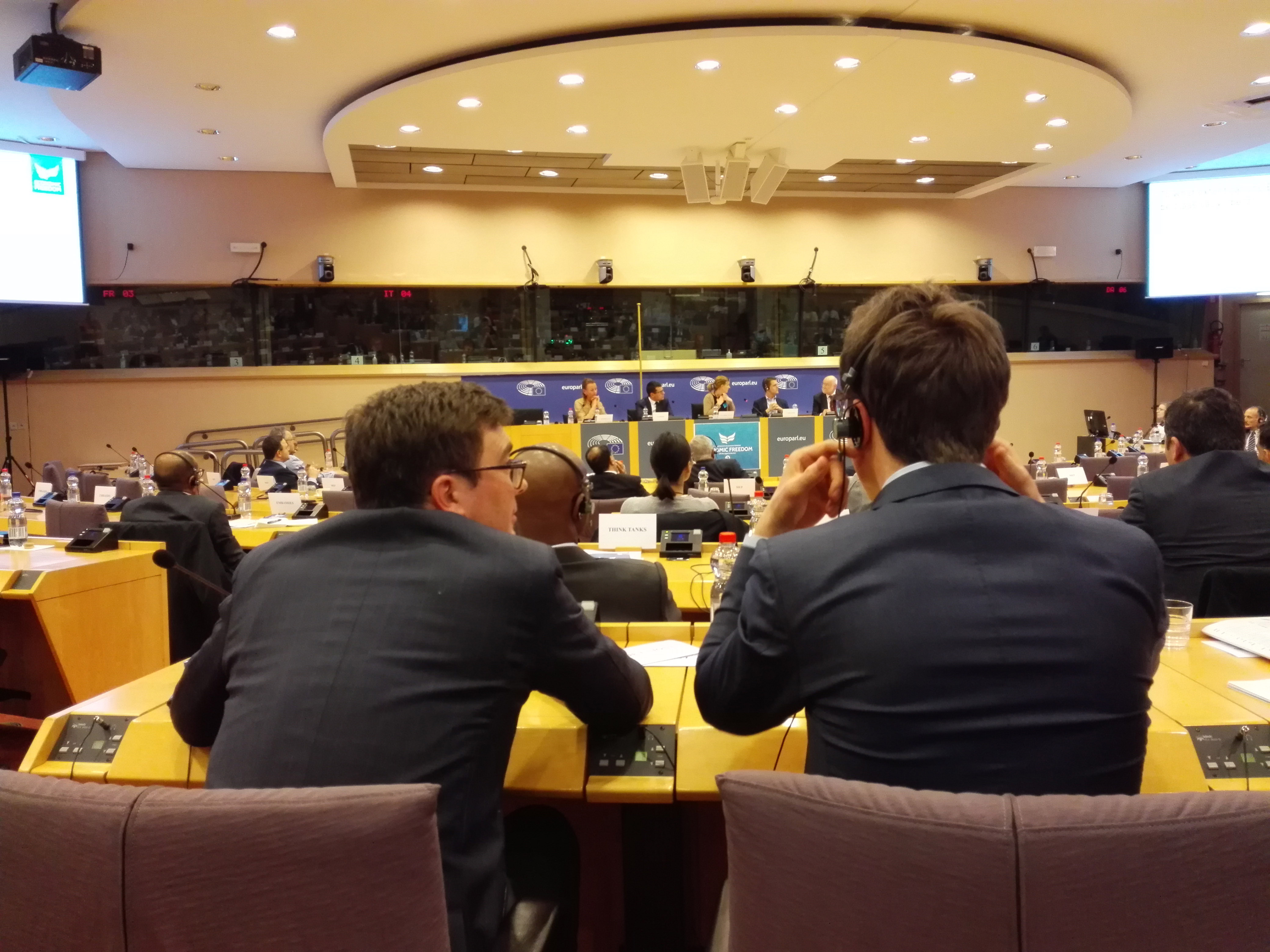There are currently two important items on the Fed’s wish list. The first is to restore interest rates to more normal levels, and the second is to unwind the Fed’s balance sheet, which has expanded since the great financial crisis, principally through quantitative easing (QE). Is this not just common sense?
Maybe. It is one thing to wish, another to achieve. The Fed has demonstrated only one skill, and that is to ensure the quantity of money continually expands, yet they are now saying they will attempt to achieve the opposite, at least with base money, while increasing interest rates.
Both these aims appear reasonable if they can be accomplished, but the game is given away by the objective. It is the desire to return the Fed’s interest rate policies and balance sheet towards where they were before the last financial crisis, because the Fed wants to be prepared for the next one. Essentially, the Fed is admitting that its monetary policies are not guaranteed to work, and despite all the PhDs employed in the federal system, central bank policy remains stuck in a blind alley. Fed does not want to institute a normalised balance sheet just for the sake of it.
Of course, this must be officially denied, which is what Ms Yellen did recently, when she claimed another financial crisis is unlikely in our lifetimes. Being in a state of official denial draws attention away from the difficulty of restoring both interest rates and the Fed’s balance sheet to a time in the past.
So, on interest rates, in the Fed’s collective mind, the reason they must be normalised is only to give them some room to be lowered in the event of a crisis. The Keynesian conviction, which is shared throughout Western central banks, is interest rates must generally be kept low to stimulate the economy. The concept of interest rate normality, by which the Fed presumably means the rate set by free markets, is wholly at odds with the Fed’s economic religion.
And what is that normal rate? According to central bankers it is between an undefined something and the Taylor rulei. The Taylor rule is likely to be considered only when justification for zero or even negative rates is required. And we have no way of knowing what the market rate would be, because the Fed does not permit free markets to determine interest rates.
Confusion over reducing the balance sheet
The muddle over interest rates is as nothing compared with the contradictions over the Fed’s proposal to reduce its balance sheet. Since the great financial crisis, quantitative easing has allowed the commercial banks to de-leverage their balance sheets without having to sell assets, thereby preserving capital and collateral values in the private sector. Essentially, the Fed is proposing to reverse this earlier de-leveraging by offsetting the contraction of narrow money with an increase in bank credit.
The mechanism contemplated is to run off maturing assets, and if the opportunity arises, to sell assets outright. On the Fed’s balance sheet, assets are reduced accordingly, and the Fed’s liabilities to commercial banks (recorded as their reserves) are reduced as well. Normally, reducing commercial bank reserves parked with the Fed would be achieved by reducing the Fed funds rate, making it less attractive to hold excess reserves. Instead, the Fed seeks to balance its asset runoff with an increase in the FFR to a more normal level, whatever that is. This is going to be interesting, to say the least.
The only way assets on the Fed’s balance sheet can be reduced while interest rates are raised is to hope that borrowers in the private sector will be prepared to accelerate their borrowing, despite the Fed raising its FFR to its estimate of normal levels. Demand for bank credit must increase strongly enough to encourage commercial banks to withdraw funds from the Fed. But this puts the cart before the horse. The normal course of events in the Fed’s playbook is for the FFR to be raised after demand for bank credit materialises, and before price inflation is stimulated beyond the target rate. It is that that has always led into the crisis phase in the credit cycle, because the Fed cannot manage this simple process, let alone a compound monetary objective.
You would think, from reports that economic growth has been subdued since the great financial crisis, that bank credit growth has also been restrained, and is yet to reflect the expansion of base money. This is untrue. Since the great financial crisis, outstanding public and private sector debt in America has increased from about $35tn to $50tn today, an increase of 40%. It is into an economy with this added burden of debt that the Fed plans to unwind its balance sheet and raise interest rates. This cannot happen without strong demand for new credit in addition to that already created, which at first sight, is difficult to imagine if the FFR is being increased to “normal”.
In last week’s testimony to the Senate Committee on Banking, Ms Yellen appeared to back down from earlier, more aggressive, statements from the Fed’s FOMC, confirming perhaps that none of this makes sense in the current economic climate. The Fed may be tacitly admitting to the difficulties involved, having had further thoughts. Unfortunately, the option of wait-and-see, much loved by the current Fed, doesn’t look so attractive either, now that the balance sheet reduction hare has been set running.
Presumably, the Fed still assumes that at some point in the future, bank credit will be demanded in increasing quantities, offering the opportunity to reduce its own balance sheet while raising interest rates. But if the Fed tries to reduce its balance sheet when the economy is growing more strongly, and demand for bank credit is rising, it will be accelerating the expansion of bank credit even further. Will it really want to do this?
Worse, it will happen at a time when banks can be expected to be competing to lend, and therefore not passing on higher interest rates. This usually occurs before the credit cycle enters its crisis stage, and is entirely a fault of the fractional reserve system. Perhaps this important point requires some further clarification.
When the banks see better times, lower default risk and increasing demand for credit, individual banks will reduce borrowing rates to compete for loan business. As we saw in 2005-06, if there’s business out there, the banks will cut rates to attract it. The fact often overlooked is it costs almost nothing for a bank to issue extra bank credit, and an increase in deposits is the result. The crucial point is interest rates do not have to be increased to attract deposits, because deposits are created by bank credit. The cost limitation, if all the banks do it at the same time, is basically the administrative cost of taking on extra loan business.
Of course, not all banks will do this at the same time, but enough will to make sure the effect takes hold. At the margin, banks balance their books in the interbank market, which will be awash with deposits, the result of the general expansion of bank credit. The only regulatory restriction is the level of bank reserves that must be maintained at the Fed. But the Fed is overflowing with bank reserves already.
The Fed can fine-tune the FFR as much as it likes, but when there’s demand for bank credit and banks are competing, interbank rates need not increase at all and are likely to fall. In the past, when there were no excess reserves, the expansion of bank credit featured off-balance sheet shenanigans, through the alphabet soup of collateralised loan vehicles. Today, there’s over $2tn of bank reserves, which can be expanded on-balance sheet, by ten times or more. And if the FFR is at say 2%, expanding a draw-down by nine times in commercial loans means that the FFR rate forgone is only 0.2% on the bank credit created.
It mocks the concept that the Fed can manage demand for money through fine-tuning interest rates. It also follows from this that if the Fed attempts to regain control over bank credit expansion, it cannot be through quarter-point steps: there comes a time in the credit cycle when the Fed must raise interest rates sharply enough to bring bank credit expansion back under control. As night follows day, a credit crisis then ensues.
This cycle of events is so predictable. Yet the Fed hopes to unwind its balance sheet into an upswing of a credit cycle over which it has no control. The Fed has set itself the impossible task of balancing the contraction of narrow money against the expansion of bank credit.
Therefore, balance sheet normalisation is little more than a wish, unlikely to be achieved. It is possible for the Fed to let some of its assets run off into maturity, and some balancing factors can be deployed, such as utilising repos, and reducing the level of outstanding reverse repos. But these are only temporary smoothing actions.
Attempts to significantly reduce the Fed’s balance sheet will forever be deferred to a future date. Meanwhile, the credit cycle marches on. We don’t know for how long, how much the Fed will have to raise interest rates to set off the crisis phase, or even if the cycle will be interrupted earlier by a financial, systemic, or geopolitical crisis. But the one thing we can say with a high degree of confidence is that when it hits, the Fed’s balance sheet will still be overloaded with unwanted assets.
i The Taylor rule is an equation that adjusts the Fed funds rate for the rate of inflation, the targeted rate, real output and potential output. It is the concept that gives justification for negative interest rates in defiance of all reasoned interest rate theory.



Alasdair Macleod is right: the Fed, and indeed other central banks, are in a bind. The fundamental cause of this problem stems from treating central banks as separate from the governments of which they are in reality part – though of course CBs have a measure of independence, just as every government department, university, etc has a measure of independence.
At present we have two separate forms of stimulus: monetary stimulus, administered by CBs and fiscal stimulus administered by those – er – “highly qualified economists” commonly known as “politicians” (ha ha). That makes as much sense as a car with two steering wheels controlled by a husband and wife having a matrimonial row.
In contrast, if treasuries and CBs acted in unison, there’d be no difficulty at all in raising interest rates while reversing QE: all the state needs to do is carry on running a deficit, funded by more borrowing. That would tend to result in the private sector holding more debt than it wanted, thus it would need to be dissuaded from spending away that excess wealth by offering said “wealth holders” a better rate of interest.
Merging monetary and fiscal policy was advocated by Positive Money, the New Economics Foundation and Prof Richard Werner in their joint submission to Vickers. See:
ttp://b.3cdn.net/nefoundation/3a4f0c195967cb202b_p2m6beqpy.pdf
Milton Friedman advocated the same sort of “merge” at the link below, though he advocated THE SAME AMOUNT OF stimulus each year: bit of an odd idea, but not entirely without logic. See:
http://0055d26.netsolhost.com/friedman/pdfs/aea/AEA-AER.06.01.1948.pdf